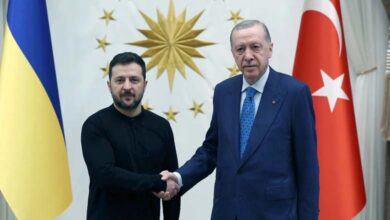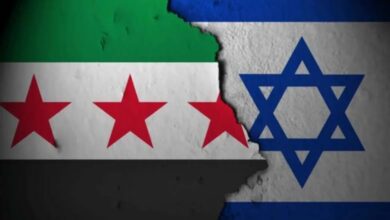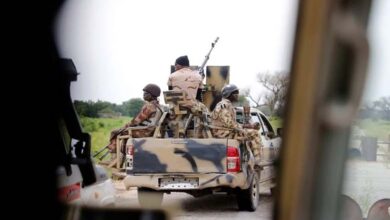Gaza Agreement… 5 U.S. steps expected after the UN Security Council resolution

The UN Security Council’s resolution on Gaza has given the United States the green light to initiate five steps that will form the next phase of the plan to end the war.
The resolution paves the way for several countries to officially declare their participation in the international stabilization force, which will begin deploying in areas currently controlled by the Israeli army in Gaza, before it withdraws toward Israel.
In this context, the deployment of the stabilization force will be preceded by an Israeli withdrawal—according to specific timetables—from nearly half of the Gaza Strip, where the Israeli army remains deployed below the so-called yellow line.
The resolution also allows U.S. President Donald Trump to form a Peace Council, which he will chair and which will include heads of state and government from various countries.
This Peace Council is expected to establish a Palestinian technocratic committee that will manage daily affairs in Gaza under the Council’s supervision.
The resolution further gives the World Bank authorization to provide the financial resources needed to support Gaza’s reconstruction and development, including through the creation of a dedicated trust fund managed by donor countries.
No specific timeline has been set for implementing these steps, but observers expect the process to begin before the end of the year or at the latest early next year.
Israel considers the first phase of the agreement to conclude with the return of the dead hostages, three of whom are Thai workers.
Peace Council
U.S. Ambassador Mike Waltz, Washington’s representative to the United Nations, stated before the Security Council that the resolution represents another significant step toward stabilizing Gaza, enabling it to prosper and ensuring a secure environment for Israel.
He indicated that the Peace Council would be chaired by President Trump and would serve as the cornerstone of U.S. efforts. According to Waltz, the Council will coordinate the delivery of humanitarian assistance, facilitate Gaza’s development, and support a technocratic body of Palestinians responsible for daily civil services and administration, while the Palestinian Authority continues its reform program.
Palestinian Technocratic Committee
Waltz suggested that the formation of the Palestinian technocratic committee would fall under the authority of the Peace Council chaired by Trump. The composition and leadership of this committee remain unclear, but it is considered essential for transferring governance in Gaza from Hamas to a new Palestinian entity.
The UN resolution states that the Peace Council will work to establish a transitional governing administration, including oversight and support of a nonpolitical Palestinian technocratic committee composed of qualified individuals from Gaza, under the sponsorship of the Arab League, and responsible for daily civil administration.
International Stabilization Force
Waltz explained that the resolution provides the necessary framework for troop-contributing countries to move forward toward establishing the international stabilization force, while also giving financial institutions the mechanisms needed to direct investments.
He stated that the force will support an area free from Hamas’s control, while financial institutions will contribute to Gaza’s reconstruction and development.
He added that the force will stabilize the security environment by supporting disarmament in Gaza, dismantling terrorist infrastructure, removing weapons from circulation, and protecting Palestinian civilians.
The resolution calls for the creation of a temporary international stabilization force to be deployed under unified command approved by the Peace Council, with armies contributing forces in coordination with Egypt and Israel, and authorized to take all necessary measures in accordance with international law, including international humanitarian law.
It further specifies that the force will work with Israel and Egypt—without affecting existing agreements—alongside a newly trained and accredited Palestinian police force, to help secure border areas and stabilize the security environment by ensuring Gaza’s full disarmament, preventing the rebuilding of military and offensive infrastructure.
The resolution adds that the force will also permanently disarm non-state armed groups, protect civilians including through humanitarian operations, train and support the newly accredited Palestinian police, coordinate humanitarian corridors, and undertake any additional tasks necessary to support the comprehensive plan.
Israeli withdrawal
The resolution links the deployment of the international stabilization force with the Israeli army’s withdrawal from Gaza, which is seen as an essential step toward ending the war and preventing the Israeli far right from pursuing settlement ambitions in Gaza.
The resolution notes that as the stabilization force establishes control and stability, Israeli forces will withdraw according to criteria and timelines related to disarmament, agreed upon by the Israeli army, international forces, guarantors, and the United States. A security perimeter may remain in place until Gaza is fully secured from renewed terrorist threats.
The resolution adds that the stabilization force will assist the Peace Council in monitoring the ceasefire, arrange the mechanisms needed to implement the comprehensive plan, operate under the Council’s strategic guidance, and be funded through voluntary contributions from donors and affiliated financing agencies.
Reconstruction
Waltz expressed confidence that the investments following the resolution’s adoption will revitalize Gaza’s economy and offer Palestinians an alternative to their continued dependence on aid.
He stressed that the World Bank will play a central role in long-term reconstruction and in addressing immediate humanitarian needs.
The resolution states that the World Bank and other financial institutions will provide and facilitate the resources needed for Gaza’s reconstruction and development, including through a dedicated trust fund managed by donors.












